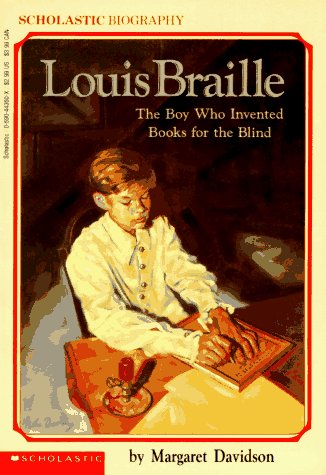I can’t afford to not record: Barbara Henning’s A Swift Passage and the Experiment of Restlessness
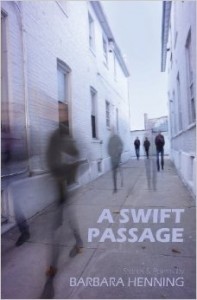 A Swift Passage
A Swift Passage
by Barbara Henning
Quale Press LLC, Nov 2013
144 pages / $16 Buy from Amazon or SPD
the mind is action literally, not departing from that—being
events or movement outside, which is inside, so the mind is collapsing
into and as action — I can’t rest, at all now.
— Leslie Scalapino, “New Time”
Barbara Henning is restless. She writes poems, novels, artist’s books. She travels. She lives on other continents. She is a New Yorker. Sometimes she is not a New Yorker. She documents the hegiras of others. She documents her own migrations. She confronts immigration, access to health care, gun violence, munitions manufacturing, genocide, basically, everything on the evening news. She is a tribal member of the Cass Corridor, a yoga instructor, a professor of creative writing, a member of Bella Donna, a Feminist Elder, and a superb photographer.
Her new book, A Swift Passage, is published by Quale Press. The title is misleading in terms of the book’s legibility; there’s nothing swift or ephemeral taking place here. What unfolds is a conglomerate of prose experiments and procedures, all girded by a rugged adherence to a writing regimen itself imbued with the gravitas of a ventilator (dramatic, but true).
When reading through Henning’s ouvre, the idea that recurs most often is travel (to paraphrase Leslie Scalapino, the kind of travel that jettisons mind and body). Traveling through writers: Hawthorne, Bronte, Olson, Di Prima, Norma Cole, Bernadette Mayer, Harryette Mullen, Dylan Thomas, Laynie Browne, Akilah Oliver. In this as well as Henning’s other books, it becomes Apparent that this writer loves Writers beyond what is reasonable. She possesses that rarest of qualities: boundless curiosity in the work of other poets. She mentors young poets, remembers the old ones, and continually interviews writers and introduces their work in places where it is sorely needed. She is constantly traveling through the works of others and in demonstrating that travel, simultaneously produces creative work while pointing outward to the work of others.
Of course there are as many Places in Henning’s travels as there are writers: Detroit, Tucson, Pennsylvania, New York, Vegas, Afghanistan, Mysore, and Seattle. The first few sections of the book shift scene so much that the sentiment and observations feel touristy in their snapshot quality. In these moments, that New York sense of “where’s the rest of culture?” pops out. Particularly distressing are some remarks about the dearth of “poetic culture” in Texas, a fact which puzzles me as a poet living in a large city in Texas (H-town) whose poetic culture is thriving and disjointed and safely beyond the university’s control (end of rant).
Near its middle, the book surges into Henning’s compelling documentation of a woman’s agonizing predicament over her immigration status in “Hegira I.” The choice between U.S. and Canada becomes no choice at all, but the problem is she is already in the United States. She’s effectively blocked from the advantages of Canadian law unless she can escape from America. Henning beautifully underplays this irony in her handling of the narrative. In her recreation of the minute-by-minute decision making that threatens to overwhelm the story’s heroine, Henning somehow manages to evoke dilemmas similar to those Harriet Beecher Stowe placed at the forefront of 19th century American consciousness. Again, freedom lies to the North. Henning’s storytelling puts a face on a problem that is often herded into the abstract by the legal community. Her treatment feels like a direct response to the dehumanizing coverage that many U.S. media outlets obligatorily devote to the situation. The spirit driving Henning’s attention to her subject is undeniable.
Appropriately, Henning ends her book with The Dinner, a novella whose Subject is writing. The plain emphasis on the act of choosing words becomes the plot, a hazy sortes virgilianae with noirish elements hung over from earlier works. Often inspiringly jagged, it can quickly open into passages that rival At Swim Two Birds in associative zaniness/zoominess:
December 13th, 2013 / 12:00 pm
The Compleat Memoirrhoids by Steve Katz
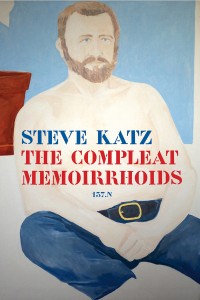 The Compleat Memoirrhoids
The Compleat Memoirrhoids
by Steve Katz
Starcherone Books, Nov 2013
392 pages / $23 Buy from Starcherone or Amazon
Memoir as a genre markets self-promotion as entertainment. And as market trends and my own personal reading trends are concerned, the tactic seems to seep into success like a junk food binge. I’ve read entire memoirs by people I didn’t and still don’t care about, people I’d never heard about before reading and have since forgotten, and more infrequently, people I actually like. At the beginning of last year I read Lit by Mary Karr just to get the David Foster Wallace gossip, High on Arrival by Mackenzie Phillips, God knows why. By his own admission, Steve Katz isn’t a popular literary icon. Toward the end of this collection he wonders, “How will my work invoke even a sputter of recognition?” in the face of no one remembering once famous film legend Edward G. Robinson. So why read his memoir?
To be honest this is another one of the many memoirs I’ve read by someone I had no foreknowledge of. What attracted me to it was the writers who he had come into contact with and the label of avant-garde writer attached to his name. Memoirrhoids looks to combine memoir and hemorrhoids into one word so readers of this work can on some level stew over the inherent link between memoir writing and shitting. These clumps of memories are not organized into some chronological cause and effect story, nor do they all have some moral lesson. Instead the collection comes together formally like actual memory exists in our human digestion – in loose subjective, subconscious, and unconscious networks of meaning after the chronological intake of events breaks down inside our heads. As Katz says himself, “Maybe it’s because I want to present my experience as following the incessant sputter of life, and that my recollections present themselves as random, in fits and starts, and hardly ever in chronological order.” To add some form of demand on the project, he aims for creating 137 of them, a number that he explains has many mysterious and powerful significances. As far as memoirs go, this is at least an original approach.
For people who like insights on craft, random warm and fuzzy memories, and literary gossip, this is a pretty fun book. We learn about his unique writing method of getting under the covers and writing a first draft in a lemon juice/ invisible ink method that puts the manuscript in danger of being incinerated by a candle when transferring it over to another draft. We get to hear about him sleeping with an ashamed German prostitute, being unfaithful to his wife, running into a young Geraldo Rivera who dated Kurt Vonnegut’s daughter, receiving a compliment on his writing from Pynchon at Cornell, pissing off Nabokov for misusing his name, having John Berryman piss in his bed, watching William S. Burroughs and Tennessee Williams briefly discuss substance abuse, and on top of it all we are treated to great sentences like, “I doubted they’d let me in to the Vatican with an erection.”
Some of the best pieces are ones like ‘Caffeine’ that describe relatable teenage memories about first discoveries of coffee, written in a 1950s Kerouac style, as well as ones like ‘Publishing Uptown’ that give us glimpses into the world of publishing for up and coming experimental writers of the 60s. The recounted memories span through so many different subjects that, although not all of them will connect with each reader, there is enough in here to entertain almost anyone who appreciates art, loves to travel, has spiritual inclinations and revelations, or has a penchant for reflecting on his or her own character defects.
In one of the few meta pieces about this collection Katz says, “Maybe this writing is a bridge. A bridge from NOW to then. I trust it will be here, the same words, whenever I need them. What a fool’s spree this writing be.” Although memoir is the simple and indulgent medium that any hack or celebrity can write or get someone else to write for them, Steve Katz doesn’t go the trite route, but instead refreshes the form in his own way, collecting bite sized increments into a pointillist picture of himself and his experiences.
December 13th, 2013 / 12:00 pm
A Review of Nick Sturm’s How We Light
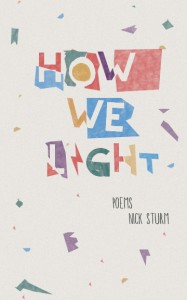 How We Light
How We Light
by Nick Sturm
H_NGM_N BKS, June 2013
104 pages / $14.95 Buy from Amazon or H_NGM_N
“One traverses the same paths of thought as before. Only they seem strewn with roses.”
– Walter Benjamin
A question I’ve learned to ask my students this semester is, “What did this book of poetry make your body do?” I ask this 1) because it’s a question that has nothing to do with proving that you understood a book and everything to do with articulating an experience you had with a book 2) because it steers students away from focusing on “disliking” and “liking” and steers them more into intuitive, momentous ways of thinking that help us get unstuck / stuck into more complicated ball pits like: Did the lemonade in this book (“I drink lemonade and migrate into a system of becoming” – “I Feel Yes”) taste like it was made from concentrate or by hand? How does the repetitive presence of lemonade twist and gut the aphorism, “When Life Gives You Lemons, Make Lemonade?” Can a sour nest of pressed pulp devolving into a drink that tentacles us to words like brightness, warmth, shine be considered a kind of (un)holy transformation? Is that what your throat’s Charley Horse is telling you? 3) if students don’t learn that poems should do more than sit on a page, if students don’t learn that NOT feeling something grip or rip you is an indication that something is wrong, then I don’t know what we are using these institutions of higher yearning for.
Q: What did How We Light make your body do?
A: Bargemusic
It’s a question that’s not easy for students to answer, mostly because they are not used to incorporating their sensory organs into their thinking. They are often overwhelmed by the idea of paying attention to those reactions, by taking cell inflammation and disruption seriously, by collaging it with the logical systems of reading comprehension that are pressed and pressed into them. Lisa Robertson says a simple thing in her essay, “Time in the Codex,” from the book, Nilling, “I feel astonished that any institution could have placed [a book] in my hands, then left me alone with it. Reading misuses privileges, abuses authorities, demands interference.” Is reading and experiencing reading always volatile? I think the answer might be Yes in a way that makes me consider whether or not volatile-ness is inherently violent or violence making, whether interference is inherently violent or violence making. I forget that power is not only a thing that is stolen or improperly kept. In Robertson’s insistence and word choice, there is a leaning into the ways in which the existence of the book and our ability to digest it defies the way transformation and permission is distributed. Free Pattern Tune-Ups. Free Limb Loosening. Free Energy Glisten. A different kind of Universal Health Care. Will you open yourself up? Will you receive these things? It occurs to me that I don’t register enough how INDULGENT the act of reading is. It occurs to me that this quote is making me re-define these words, volatile, indulgent, in charged ways that I wasn’t planning on. I am beginning to associate them more thickly with pleasure and the detection of shifts. But then again, I read because reading is always interfering with the rituals I use to create expectations. It is always updating my machines. Reading is the experience of inhaling process and practice and building and force without expecting to feel recognition, nodding, without expecting to feel that what we glimpsed was completely representable. Bruce Andrews on Gertrude Stein: “Here, the meanings we construct are not compensatory. Readers don’t perform some co-invocation of a lost or ever-receding presence. This isn’t reading as containment, or rollback, but as extension.” I dream about bridges. I dream about the possessiveness reading abandons. I dream about soft gauze killing my boundary waters. Sometimes I make a sandwich and watch everything do more than I could imagine. (“Beautiful beautiful Animal / animal” -Upstairs With His Sandwich) Ben Mirov says, “Just as artists and writers have imagined sentient machines in their work, so too is it possible to imagine a poem that is imbued with qualities beyond the structure of its coherent materials.” Poor statues. They don’t move. They don’t grow kites out of a shoulder.
Q: What did How We Light make your body do?
A: “A man who doesn’t love easily, loves too much.”
– Special Agent Dale Cooper
I am not a person who comes easily to joy. Or rather, I feel joy constantly. There are dead leaves outside right now that smell like parts of the earth I’ve never seen. I walk to school everyday for the first time in years and listen to these songs that cover my organs in gold paper so hard I have lay down in the wilds. But it also hurts. It feels turbulent! The intensity of it, the impact of radical immediacy, how it seems tied also to my ability to feel immensely dented by you and everything else touching me. Can I survive it? I’m not convinced How We Light is a book that comes easily to joy, either, though it is often the first thing one can and should note about Sturm’s poetry, about where his poetical contraptions get their antifreeze. The texture of How We Light’s exuberance is pulpy, palpable, pulse-ridden.
“Why something in a word out of its body
makes me feel everywhere as air, air that lives
in mouths and birds all peach pie and dynamite”
– I Feel Yes
You know what chainsaws actually are? They are exclamation points. Boorish and toothy hounds. “My actions are excessive!” -I Feel Yes. You know what exclamation points are? Exclamation points are mouths that can’t help themselves, that can’t help interfering with the steady speed limit of a page. They are the inevitable slobber marks of awe force making you and the text slippery. They litter the fourteen pages of dawn and rumble that “I Feel Yes” is, one of two long poems that appear in How We Light. These moments of exclamation / proclamation / declaration aren’t enacting a refusal to be left out, though. They aren’t a power grab. Their presence isn’t one that feels aggressive or forceful here or in one of the titles which repeats nine times throughout the book, “What a Tremendous Time We’re Having!” They aren’t demanding attention in that way, which is exactly why I am drawn to them, why I’m whelping for them in this book’s terrarium, underlining away. They are, like lemonade, pure-ish in the mane and straightforward. “O human trying! O American bison!”- I Feel Yes

A Still From Doug Aitken’s Migration
What’s different, inside the frame of “I Feel Yes” and the book, is that these moments of joy, of piercing through, aren’t privileged. They aren’t positioned to make the reader look at and admire them for their unbridled side heaving or for their half court language shots. In the other long poem, “How We Light,” and in many of the other poems in the book, punctuation is removed, floating all seismic activity and feeling together into an enjambed collectivity (co-trembling). This is a whole body accounted for and throwing waves at and through itself.
“When I speak it is the opposite of bones
Real life bones, my name on my hands.
I understand now, the valley full of brains.
Let’s have a conversation using only our skin.”
– “I Feel Yes”
December 13th, 2013 / 11:05 am
OPEN LETTER TO HTMLGIANT: THE SEXISM STOPS HERE
I think everyone has an Internet feud they will never forget. Here’s mine: in January 2010, Jimmy Chen wrote a post for your site (that has since been removed) in which he showed a photograph of Zelda Fitzgerald and “complimented” her cute rolls of back fat. In the comments section, I called out the sexist move of reducing a female writer to the shape of her body, and was immediately dismissed with a “fuck you” and someone asking why I had a sexy picture of myself on my own blog.
And on my blog, Chen told me my life would be easier because my face looks like this.
In an open letter apology (that has also since been taken down), he wrote, in his defense:
“Leah [sic] Stein has a ‘right’ to post a sexy picture of her, and I have a ‘right’ to think her life will be easier because of her beauty than an ugly woman’s which is why she [sub]consciously posted it.”
There is nothing easy about the life of a writer with the face of a woman, especially when men get to tell you what you’re allowed to do with your face. Which brings me to yesterday’s post by Garett Strickland, about how Kate Zambreno humiliated him when she unfriended him on Facebook, taking away his ability “to participate in a conversation I’ve got as much right to as any other human being, regardless of the seemingness of my being white or male.”
Note that both Chen and Strickland are eager to point out their “right” to write whatever hateful, sexist, ignorant thoughts cross their minds, even in the personal spheres that female writers are often forced to create out of necessity for their own safety (Chen was commenting on my blog; Strickland was writing on Kate’s own Facebook page).
In retaliation for his hurt feelings, Strickland goes on to unleash what I can most accurately call a sloppy prose poem about sexual inadequacy, which ultimately turns Zambreno into a doll, “Made by Men,” who arrives in a box. When he pulls the string, she delivers “reactionary polemic” that Strickland can’t understand due to “personal deficiencies.”
Here’s the most significant thing Strickland doesn’t understand, the worst of his personal deficiencies: he doesn’t realize that by objectifying Zambreno and turning her into a doll, he is being aggressively chauvinist. He isn’t participating in a conversation he has a “right” to. Notably, in order to have a conversation, he has had to create a doll who can only spew pre-recorded messages, who can’t actually talk back.
To Chen and Strickland, I would ask: have you ever been reduced to a body and a face? Have you ever felt afraid for your safety because of your body? Has anyone ever trivialized your work because of your gender?
In the summer of 2011, I met with a team of Random House sales reps who would be responsible for bringing my novel and poetry collection to bookstores and libraries around the country. One asked me what kind of cover image I wanted for my novel.
“I only know I don’t want a headless woman on the cover,” I said. “I don’t want my book cover to exclude men from picking it up.”
“Do you really think a man would read your work?”
“Well, a lot of men like my poetry,” I said.
“Only because you’re cute,” I was told. By my editor.
I didn’t know what to say. I like to think that out of the 37 people in the world who read poetry, the men who read mine are finding some merit there, and not just jacking off to my author photo.
Chen has described Zambreno as “a feminist who hosts an irrational hatred of me due to not being able to perceive my misogyny ironically,” but what’s truly ironic in all this is that Zambreno has written an entire book about women who were written off, robbed, and institutionalized for/because of their creative talent, while their husbands and lovers were celebrated. I read Heroines with my jaw hanging open in recognition, especially when I got to page 140. She describes Chen’s Zelda post and the feuding in the comments section:
The snarky dismissal. I answer back with vitriol. It becomes heated, ugly. Personal. Slurs of a sexual nature slung in the comments section, mostly by a chauvinistic supporter of Chen’s. A way to bully, which is to humiliate, to silence, to make a woman smaller whose behavior is seen as outsized. (Won’t she fucking shut up?)
As writers, we know words carry power. I challenge HTMLGIANT contributors to use their power to make this site the weird-ass literary carnival it is at its best, without using discriminatory, sexist, hate speech that objectifies, humiliates, and infuriates their female readership. To quote the Urban Dictionary, please check yourself before you wreck yourself:
Take a step back and examine your actions, because you are in a potentially dangerous or sticky situation that could get bad very easily.
Sincerely,
Leigh Stein
Dress Up with the Contagious Knives
Besides possessing a really pretty first name, Joyelle McSweeney has earned a place as one of the top three poets presently (the other two are Ariana Reines and Chelsey Minnis). Totalitarian, deathy, and melodious, Joyelle has composed a Hunger Games-like novel, an essay about Ronald Regan, and a play, the Contagious Knives, that’s rich in rancor and in rhymes.
The Contagious Knives displays the diction of a nimble rapper and the pitch of an impassioned preacher. As the play’s hero, Louis Braille, tells Bradly Manning, “No indian giving, no taking it back, / except when you take it from me, / Indian, Chinaman, Brad-lee.”
Obviously, Joyelle needs no help decking her characters. Louis’s costume consists of pink panties, a Target t-shirt, a Victorian sailor suit, liquid eyeliner, and more. But what if it was required to dress the Contagious Knives’s characters in designer labels for a French Vogue editorial? What would they wear then? Well, maybe they’d trot out on stage in these things:
Boastful, sassy, and violent, Joyelle’s Louis Braille is a boy for boys to admire. Some of Louis’s first lines are: “I’m a very special cunt. / A very special fucking cunt. That’s what daddy always said / (wink wink).” Not humble about inventing his eponymous language for blind boys and girls, Louis likens himself to napalm and hints at an affiliation with Nazis by repeating “Not see!” four times in a row.
December 12th, 2013 / 1:13 pm
In Conversation: Matthew Revert and Michael J Seidlinger
Matthew Revert: Who friended who? I don’t even know anymore.
Michael J Seidlinger: How the hell did we start talking to each other? At one point we were both strangers, completely invisible to each other. Hmm, I think what happened, on my end, is that I friended you and didn’t reach out and talk for a long time. I tend to do that.

MR: I remember you were posting about your insomnia, and being a fellow insomniac, we discussed it a lot.
MS: This is true. I am a raging insomniac.
MR: And I suggested you listen to earth2 by Earth. And friendship was born.
MS: And from there, it quickly spiraled into design. I think it was being mutually interested in graphic design that forged it.
MR: Design was the key. I’m not even sure if you knew I was a writer at the time.
MS: I actually did. I knew you were a writer. Ironically, I do remember knowing of you as a writer before the design.
MR: Oh? That actually pleases me.
MS: I think it was the book with all the people on the front, the carbon copies. A Million Versions of Right?
MR: Yeah, that was my first book. About to go out of print actually.
MS: Yeah, I bought that and read it and it wasn’t until we started talking about insomnia via comment threads and Facebook chat that I put the pieces together.
MR: Shortly after meeting you, I started investigating CCM and saw that you were a writer and also a designer. That parallel pleased me because I had always been shoved into the writer camp or the designer camp (increasingly the latter).
MS: Since taking over CCM, I’m setting all my books originally published on CCM out of print; ethical issue.
MR: Yeah. That makes sense. I worried about that with my first books for LegumeMan.
MS: Ah, so CCM led the way? It’s interesting to meet people that knew of the press before they knew of me.
MR: Yeah. Pretty sure it did. And I purchased My Pet Serial Killer. And really enjoyed a lot of your CCM design work.
MS: That gets me to thinking…
MR: Yeah?
MS: How we’re both writers and designers. I do believe that you and I were writing the books at the same time, the books that we’re talking about.
MR: As in, when we first met, you were writing Laughter of Strangers and I was writing Basal Ganglia?
MS: I recall writing Laughter of Strangers around the time you were revising and “going under” and really getting into the thick of it with Basal Ganglia. We were already talking, but it wasn’t until that time that we started talking on a daily basis.
MR: Yeah. We were both working on our books. Did we know, at that time, they would both be released by Lazy Fascist in the same batch?
MS: That’s interesting. I don’t think so. I could be wrong but I do recall having many a late night talking craft.
MR: Yeah. We unloaded our various frustrations and triumphs on each other.
MS: Good days and bad: We discussed them all.
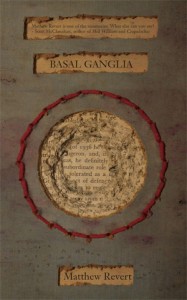
MR: Basal Ganglia was a very difficult book for me to write so there was a lot of ennui. How long did it take you to write Laughter of Strangers? You write much faster than me, I think.
MS: It took me about 3 or 4 weeks.
MR: Hahahaha. Basal took me 18 months and is half the length. You’re a machine.
MS: I think I write fast because I’m afraid of staying with a book for too long. As a result, I become consumed by the project. How many drafts did you have for Basal?
MR: Yeah, and that clearly works for you. I mean the end result says it all. I had upwards of ten false starts. I turn my book into a year-long lifestyle.
MS: So you “live” the novel—that’s awesome. Do you have any specific quotas/rituals?
MR: Getting right down to it, I started writing Basal Ganglia as a response to cognitive therapy I was undergoing. I wanted to understand that experience. That’s how it tends to be for me. I am responding to something that has happened. Something that has led to significant change within me.
MS: From the beginning, the book delved right into the cerebral.
MR: Yeah, I’m in that place. I tend to live the book for long periods. Gradually eking it out.
MS: So you sort of have a period of “making sense of it?”
MR: Yeah. And that period often maintains well into the process, but as a result of that, it only had two drafts. My first draft is very close to the final draft. But Basal Ganglia was a real puzzle to figure out and I wanted to understand as many pieces of that puzzle as possible before I started writing it.
MS: I’m personally interested in the part of the writing process that involves not the initial process, or drafting, but rather how an idea becomes something more organic, something real. It’s interesting to see how you turned the book into a puzzle given how you were looking to make sense of a puzzle. You crafted a puzzle to make sense of a personal puzzle.
MR: It seems to me that so much of the energy in Laughter of Strangers would come from the way you’re able to almost purge the book in a shorter space of time.
MS: I believe I’m beginning to see that, yeah. I have this compulsion to chase after the perceived momentum of a piece. Everything hinges on the first 2 days of writing—that two-day stretch sets the pace. Most of the time, I write approximately 3000-5000 words, have the general structure and feel of the book. I’ll know where it’s going; from there, it begins to consume me. I can’t stop thinking about it. It follows me throughout my days. As a result, I write faster. Maybe it really does show itself in the stuff I write.
MR: Before I started writing Basal Ganglia, I knew I wanted it to be set in the human brain, with the “basal ganglia” of the title becoming the only characters within that brain.
MS: Do you outline, or plan out anything conceptually?
MR: Not on paper, no. I usually start writing a random chapter. I think the first part of Basal I wrote was chapter 7. This sounds kind of wonky, but the only real planning I did outside of my head was to have a print out of the human brain’s anatomy on my writing desk. I circled a part of the brain and said, ‘okay… now write this’.
Chaser 2, a game review

One of the things I’m noticing lately is that I’m, I think not just a little sick, but completely sick of narrative video games. Or at least I am sick of games that have big, ambitious narratives.
Because I’m sick of big, ambitious narrative video games, I’ve found myself playing discrete-narrative, gameplay-centric little indie games. And old games.
So that’s why I’ve been thinking about Chaser 2 again. READ MORE >
December 12th, 2013 / 10:00 am


